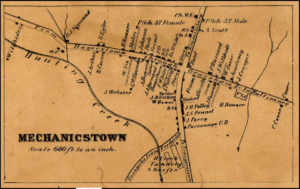Rouzer Tanneries

Creating leather clothes, shoes, bags, and pouches from animal skins has been in practice for thousands of years. Ancient civilizations used leather for harnesses, shoes, bags, and armor, and we know Native American Indians were making leather goods when Europeans arrived on the continent. The name for the process – tanning – is derived from the acidic chemical compound found in the bark of certain trees, usually oak but also chestnut, which is called tannin – no “g.” In general, the tanner created vats in the ground that were like wood boxes without lids, which were filled with water and oak bark that had been crushed or mashed into a fine texture. The hides moved from one vat and solution to another over a series of weeks until they were pliable and ready to be turned into finished goods. A tanner might perform both functions, but villages and towns usually also had a skilled tradesman, often called a saddler, who transformed the raw hide into useful products. Mechanicstown proved to be a great location for tanneries, because the heavily-forested Catoctin Mountain range provided ample wood and Hunting Creek offered an unending source of water.
Daniel Rouzer established the first tannery in Mechanicstown in 1793 to convert animal hides into raw leather material that would become saddles, bags, boots, and more. He was born in 1767; his father was a blacksmith who bought land near Graceham in 1769. Daniel apprenticed in Frederick then found regular work in Hagerstown; he married Sophia Shover in Hagerstown in 1791 and they moved to Mechanicstown in 1792. The site of his first tannery was east of town, but his father-in-law gained ownership of 250 acres northwest of town in 1797 and Rouzer moved his operation there in 1798. In 1806, Mr. Shover sold Rouzer a 50% interest in the property, and eventually Rouzer became the sole owner himself. Daniel and Sophia’s first child, Peter, later became the father of Col. John R Rouzer, who is featured in the biography section of the website.
We speculate that Rouzer’s tannery was the first in the area to step outside the solo-artisan-in-a-shop model, like a blacksmith or tailor. Records indicate the Rouzer tannery thrived for many years and provided jobs for numerous others in the community. Daniel owned hundreds of acres of land and built the Rouzer mansion in 1812, which now sits on a street named Rouzer Lane in the neighborhood across from Catoctin High School. Land records suggest his property stretched from about where Burger King is now to near Owens Creek at roughly Kelbaugh Road. At one time, a private siding track ran directly from Rouzer’s tannery to the main rail line so that his incoming and outgoing products moved more efficiently. 
Eventually, a son from Daniel’s second marriage, born in 1815 and named John, became his partner then took over after his father’s death in 1850 and continued operations until his own death in 1894. Daniel’s first marriage left him a widower, but a son from that union, named Henry, also operated a tannery in town between the 1830s and 1870s on property adjacent to the stream running through what now is Memorial Park – the stream was commonly called Rouzer’s Branch throughout the 1800s and emerged from a spring on Daniel’s property. In 1810 the Wampler tannery opened for business, and in 1820 Richard Jones of Baltimore established the Hunting Creek tannery on the site of the current Thurmont Food Bank, which is clearly evident on the 1858 map along with Henry Rouzer’s tannery on Main Street. One record suggests Jones’ Hunting Creek tannery had 200 vats and employed 15 men, so a visitor to Mechincstown during the century saw a lot of tanning happening.
Incidentally, Henry Rouzer built the stone house at 104 East Main Street and lived in it for 40 years until his death in 1887. It operates as the Stauffer Funeral Home now.




